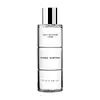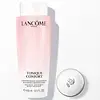What's inside
What's inside
 Key Ingredients
Key Ingredients

 Benefits
Benefits

 Concerns
Concerns

 Ingredients Side-by-side
Ingredients Side-by-side

Water
Skin ConditioningButylene Glycol
HumectantGlycerin
HumectantCyclopentasiloxane
EmollientEthoxydiglycol
HumectantIsopropyl Palmitate
EmollientPEG-12 Dimethicone
Skin ConditioningTriethanolamine
BufferingDipotassium Glycyrrhizate
HumectantAscorbyl Glucoside
AntioxidantSaccharide Isomerate
HumectantPropylene Glycol
HumectantSoluble Collagen
HumectantCucumis Sativus Fruit Extract
EmollientCamellia Oleifera Leaf Extract
AstringentCyclodextrin
AbsorbentDisodium Succinate
MaskingMannitol
HumectantHoney Extract
HumectantAcrylates/C10-30 Alkyl Acrylate Crosspolymer
Emulsion StabilisingPEG-60 Hydrogenated Castor Oil
EmulsifyingSodium Hyaluronate
HumectantYeast Extract
Skin ConditioningPropylparaben
PreservativeMethylparaben
PreservativePhenoxyethanol
PreservativeParfum
MaskingWater, Butylene Glycol, Glycerin, Cyclopentasiloxane, Ethoxydiglycol, Isopropyl Palmitate, PEG-12 Dimethicone, Triethanolamine, Dipotassium Glycyrrhizate, Ascorbyl Glucoside, Saccharide Isomerate, Propylene Glycol, Soluble Collagen, Cucumis Sativus Fruit Extract, Camellia Oleifera Leaf Extract, Cyclodextrin, Disodium Succinate, Mannitol, Honey Extract, Acrylates/C10-30 Alkyl Acrylate Crosspolymer, PEG-60 Hydrogenated Castor Oil, Sodium Hyaluronate, Yeast Extract, Propylparaben, Methylparaben, Phenoxyethanol, Parfum
Water
Skin ConditioningGlycerin
HumectantMalva Sylvestris Flower
Skin ConditioningRosa Centifolia Flower Water
Skin ConditioningSqualane
EmollientSodium Hyaluronate
HumectantSodium Hydroxide
BufferingHydroxyacetophenone
AntioxidantCaprylyl Glycol
EmollientCitric Acid
BufferingAcrylates/C10-30 Alkyl Acrylate Crosspolymer
Emulsion StabilisingPotassium Sorbate
PreservativeSodium Benzoate
MaskingChlorphenesin
AntimicrobialParfum
Masking
 Reviews
Reviews

Ingredients Explained
These ingredients are found in both products.
Ingredients higher up in an ingredient list are typically present in a larger amount.
Acrylates/C10-30 Alkyl Acrylate Crosspolymer is a synthetic polymer. It is used to thicken and improve the texture of products. Due to its properties, it can prevent water and oil ingredients from separating.
Glycerin is already naturally found in your skin. It helps moisturize and protect your skin.
A study from 2016 found glycerin to be more effective as a humectant than AHAs and hyaluronic acid.
As a humectant, it helps the skin stay hydrated by pulling moisture to your skin. The low molecular weight of glycerin allows it to pull moisture into the deeper layers of your skin.
Hydrated skin improves your skin barrier; Your skin barrier helps protect against irritants and bacteria.
Glycerin has also been found to have antimicrobial and antiviral properties. Due to these properties, glycerin is often used in wound and burn treatments.
In cosmetics, glycerin is usually derived from plants such as soybean or palm. However, it can also be sourced from animals, such as tallow or animal fat.
This ingredient is organic, colorless, odorless, and non-toxic.
Glycerin is the name for this ingredient in American English. British English uses Glycerol/Glycerine.
Learn more about GlycerinParfum is a catch-all term for an ingredient or more that is used to give a scent to products.
Also called "fragrance", this ingredient can be a blend of hundreds of chemicals or plant oils. This means every product with "fragrance" or "parfum" in the ingredients list is a different mixture.
For instance, Habanolide is a proprietary trade name for a specific aroma chemical. When used as a fragrance ingredient in cosmetics, most aroma chemicals fall under the broad labeling category of “FRAGRANCE” or “PARFUM” according to EU and US regulations.
The term 'parfum' or 'fragrance' is not regulated in many countries. In many cases, it is up to the brand to define this term.
For instance, many brands choose to label themselves as "fragrance-free" because they are not using synthetic fragrances. However, their products may still contain ingredients such as essential oils that are considered a fragrance by INCI standards.
One example is Calendula flower extract. Calendula is an essential oil that still imparts a scent or 'fragrance'.
Depending on the blend, the ingredients in the mixture can cause allergies and sensitivities on the skin. Some ingredients that are known EU allergens include linalool and citronellol.
Parfum can also be used to mask or cover an unpleasant scent.
The bottom line is: not all fragrances/parfum/ingredients are created equally. If you are worried about fragrances, we recommend taking a closer look at an ingredient. And of course, we always recommend speaking with a professional.
Learn more about ParfumSodium Hyaluronate is hyaluronic acid's salt form. It is commonly derived from the sodium salt of hyaluronic acid.
Like hyaluronic acid, it is great at holding water and acts as a humectant. This makes it a great skin hydrating ingredient.
Sodium Hyaluronate is naturally occurring in our bodies and is mostly found in eye fluid and joints.
These are some other common types of Hyaluronic Acid:
Learn more about Sodium HyaluronateWater. It's the most common cosmetic ingredient of all. You'll usually see it at the top of ingredient lists, meaning that it makes up the largest part of the product.
So why is it so popular? Water most often acts as a solvent - this means that it helps dissolve other ingredients into the formulation.
You'll also recognize water as that liquid we all need to stay alive. If you see this, drink a glass of water. Stay hydrated!
Learn more about Water